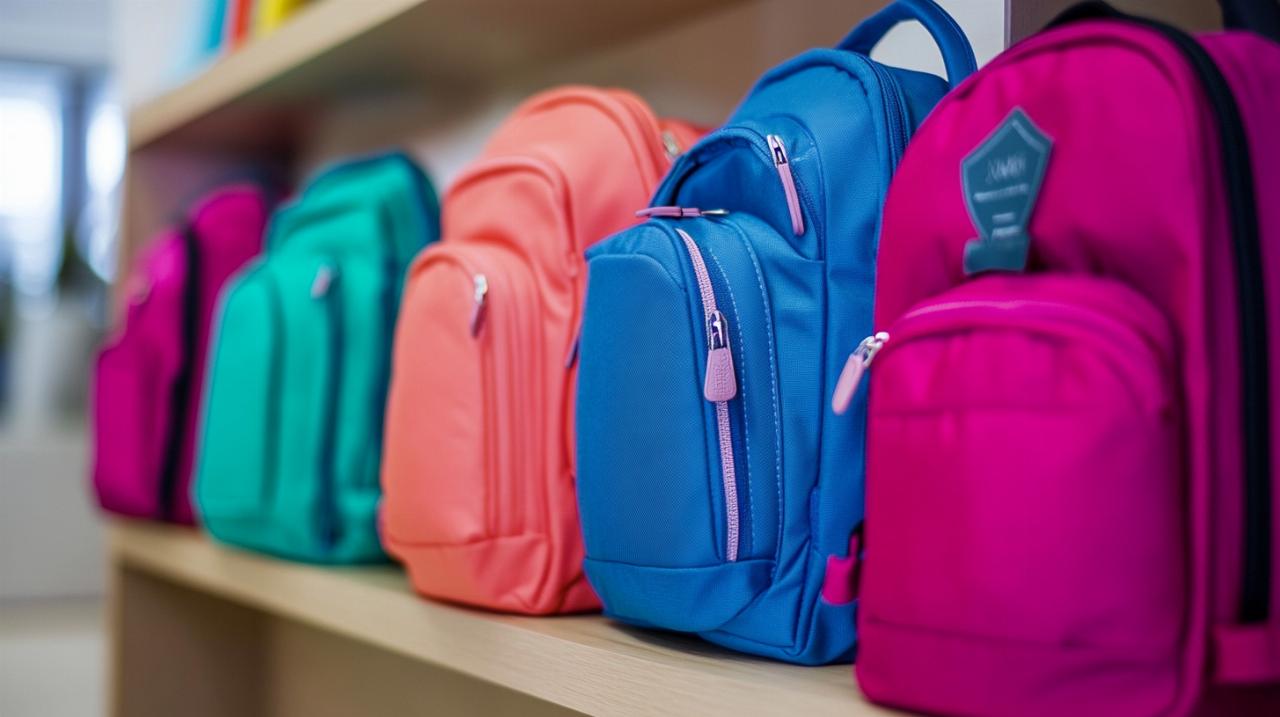Selecting the right backpack for the new academic year is more than simply picking a trendy design or the cheapest option on the shelf. It involves careful consideration of how a bag will support a student’s physical wellbeing and organisational needs throughout the months ahead. Rolling backpacks have emerged as a practical solution for pupils juggling heavy textbooks, sports kit, and technology, offering a blend of convenience and health benefits that traditional rucksacks sometimes lack. Understanding what makes a wheeled school bag truly effective requires examining everything from material quality to wheel dimensions, ensuring that your investment will serve reliably from September through to the summer holidays.
Assessing size, capacity, and durability
Finding the Right Size for All Your School Essentials
Choosing a rolling backpack begins with understanding the relationship between a student’s age and the size of bag they require. For younger children aged between two and four years, a backpack measuring approximately twenty to thirty-one centimetres in height is generally sufficient for their modest collection of belongings. Primary school pupils, on the other hand, benefit from bags ranging from thirty-five to forty-five centimetres, providing enough space for books, packed lunches, and perhaps a spare jumper. Once students reach secondary school, their needs expand considerably, necessitating backpacks that exceed forty-five centimetres to accommodate multiple textbooks, folders, and often a laptop or tablet. The best rolling backpacks for back to school are those that align precisely with these developmental stages, preventing the common mistake of purchasing a bag that is either too cramped or unnecessarily bulky.
Capacity is another crucial element that directly impacts how well a backpack serves its purpose. Models such as the JanSport Driver 8 offer around thirty-six litres of storage, making them ideal for high school students who carry substantial loads. For primary school learners, a capacity of thirty to thirty-five litres typically suffices, while toddlers may only need eighteen to twenty litres. It is worth noting that the weight of the packed bag should not exceed a certain percentage of the child’s body weight, with guidelines often suggesting no more than ten to fifteen percent. This consideration is particularly important for maintaining musculoskeletal health and preventing long-term posture problems. Dimensions also play a role in practicality, as a bag measuring around fifty by thirty-five by twenty-five centimetres can fit neatly under school desks and in lockers, whereas oversized options may prove cumbersome in crowded corridors.
Choosing materials that stand up to daily use
Durability is paramount when investing in a wheeled backpack, as these bags endure considerable wear and tear over the course of an academic year. Polyester material, particularly six hundred denier polyester, stands out as a preferred fabric due to its impressive resistance to abrasion and water. This synthetic fibre maintains its integrity even when exposed to rain showers during the morning commute or accidental spills in the canteen. Backpacks constructed from robust polyester can withstand the rigours of daily use, from being dragged across playground tarmac to being stuffed into crowded cloakrooms. Nylon is another durable option, though it can sometimes add extra weight, which is a consideration for younger pupils who may occasionally need to carry their bags.
The construction quality of seams, zippers, and stitching also determines how long a rolling backpack will last. Models with reinforced corners and double stitching around high-stress areas are less likely to develop tears or loose threads midway through the term. Water resistance is an additional benefit that should not be overlooked, as British weather is notoriously unpredictable. A backpack with a degree of water resistance ensures that books and electronic devices remain dry even during unexpected downpours. Reflective details can enhance safety during darker winter mornings, making students more visible to traffic. Eco-friendly materials are increasingly available, offering a sustainable choice for families conscious of their environmental impact without compromising on strength or longevity.
Evaluating wheels, handles, and comfort features
Testing the Wheels and Handle for Smooth Manoeuvrability
The performance of a rolling backpack is heavily influenced by the quality and size of its wheels. Larger wheels, typically measuring seventy-five millimetres or more, provide superior manoeuvrability over uneven surfaces such as cobblestones, gravel paths, or kerbs. Smaller wheels may struggle on rough terrain, causing the backpack to tip or requiring excessive effort to pull. Spinner wheels, which rotate three hundred and sixty degrees, offer the convenience of being able to push or pull the bag in any direction, though they tend to be more fragile and take up additional space. Traditional inline wheels, while less versatile, are generally more robust and better suited for the demands of daily school use.
The adjustable handle is another critical component that affects how comfortably a student can transport their backpack. A telescoping handle should extend smoothly and lock securely at various heights, accommodating the growth spurts that children experience over the academic year. Handles that wobble or feel flimsy can make pulling the bag a frustrating experience, particularly when navigating busy school corridors or stairs. Testing the mechanism before purchase is advisable, ensuring that it retracts fully without jamming and that it feels sturdy when extended. Some models include a cushioned grip, which reduces strain on the hands during longer journeys from home to school.

Looking for Padded Straps and Versatile Carrying Options
While the primary appeal of a wheeled backpack lies in its rolling capability, the option to carry it as a traditional rucksack remains invaluable in certain situations. Stairwells, crowded buses, and narrow corridors often make wheeling impractical, necessitating the use of padded shoulder straps. These straps should be adjustable and well-cushioned to distribute weight evenly across the shoulders, preventing discomfort and strain. Backpacks that lack adequate padding can dig into the skin, particularly when the bag is heavily loaded, leading to soreness and reluctance to use the carrying mode.
Multiple carry modes enhance the versatility of a rolling backpack, allowing students to switch seamlessly between wheeling and carrying as circumstances dictate. Some models feature a top grab handle, which is useful for quickly lifting the bag onto a desk or into a car boot. A removable trolley system offers the flexibility to detach the wheeled base when it is not needed, though this feature is more common in higher-end models. Ensuring that the straps can be tucked away neatly when the bag is being wheeled prevents them from dragging on the ground and becoming dirty or damaged. Comfort features such as breathable back panels can also make a difference when the backpack is being carried for extended periods, reducing heat build-up and perspiration.
Organisation, value, and real-world performance
Examining Compartments and Pockets for Proper Organisation
Effective organisation within a rolling backpack can significantly improve a student’s daily routine, making it easier to locate books, stationery, and personal items without rummaging through a jumbled interior. A well-designed backpack typically includes a large main compartment for textbooks and folders, a middle pocket for smaller supplies, and a padded sleeve specifically for laptops or tablets. The padded sleeve is particularly important, as it protects expensive electronics from knocks and bumps during transit. Some models also incorporate external pockets for water bottles or quick-access items such as bus passes and mobile phones.
Additional compartments, such as a separate lunch bag or pencil case, add further convenience, ensuring that food remains separated from books and that pens do not leak onto homework. Backpacks with multiple internal dividers help students keep subjects organised, making it easier to retrieve the correct materials for each lesson. Mesh pockets and zippered sections provide secure storage for valuables, reducing the risk of items falling out when the bag is tilted or moved. The more compartments a backpack offers, the better students can maintain order, though excessive pockets can sometimes lead to wasted space or unnecessary complexity.
Comparing Prices and Reading Reviews for the Best Investment
Finding the best value for money involves balancing cost with quality and features. Budget-friendly options, such as the Rockland Double Handle Rolling Backpack or the Kono model, provide essential functionality at a lower price point, making them suitable for families seeking an economical choice. Mid-range backpacks, including the J World New York Sunrise and the Totto unisex, offer a blend of durability, capacity, and design at a reasonable cost. Premium models like the Osprey Farpoint or the Halfday Carry-On Garment Roller command higher prices but deliver superior build quality, extended warranties, and advanced features that justify the investment for frequent travellers or older students.
Reading reviews from other parents and students provides invaluable insight into real-world performance and longevity. Online feedback often highlights issues that may not be apparent from product descriptions alone, such as zippers that snag easily, wheels that wear down quickly, or handles that break under stress. Ratings and testimonials can reveal whether a backpack lives up to its advertised durability and whether it remains comfortable and functional after months of daily use. Comparing different makes and models across various retailers also helps identify the best deals, particularly during sales events when discounts can make premium options more affordable. Ultimately, investing in a well-reviewed, appropriately sized, and feature-rich rolling backpack ensures that students are equipped for a successful and comfortable academic year.





